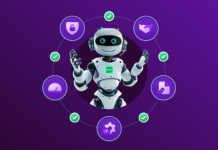There is certainly no shortage of hype around the topic of artificial intelligence (AI). Every day we find grand proclamations about the arrival of next-level bots, machine learning, and AI – that may or may not kill us. But, like most “next big things”, what you read is not necessarily what you get. In fact, the current state of AI is a far cry from the “end all, be all” we often read about.
In a Perfect World
In a perfect world, our lives would be enhanced through perfect AI assistants who answer our questions and solve our issues. From a business’s perspective they will have saved millions of dollars by replacing redundant employees. From a consumer’s perspective, we will have saved precious time and effort.
Unfortunately, though, we are still a ways off from a perfect world. Perfect AI is still a pipe dream, with no technology close to being able to pass the “Turing test” – the default standard used to define artificial intelligence that can pass for being a real human. Until we meet this standard, the risks of AI providing a sub-standard customer experience are still too high for most businesses to move ahead with full confidence in the technology.
This doesn’t mean that business should or have abandoned their AI-powered hopes and dreams. In fact, many businesses have plowed straight ahead – leveraging AI, bots, and machine learning at the fringes of their customer communications.
Whether this strategy is correct or not still remains to be seen.
There are still major issues and limitations, regardless of the AI technology being leveraged. For example, logic-based AI faces severe limitations regarding the depth of assistance that can be rendered. Whereas Natural Language Processing (NLP) solutions currently feature fail rates up to 70% – necessitating human interception more times than not.
At Glia, however, we have worked with several enterprise companies to help develop a conversational AI strategy that we feel represents the most logical and efficient way forward with minimal risk. We call this approach “AI Kaizen Launch Plan”.
A Phased Approach to AI
The “AI Kaizen Launch Plan” approach to AI infusion that we’ve developed allows companies to pace their AI evolution without any sacrifice to their customers’ experience. The one caveat to our approach, however, is that for it to be most effective, each stage must be carried out in order.
Stage 1 – Human to Human Conversations
During the first stage of our approach only human-to-human communications take place. This stage is really about data collecting and analysis. Until companies have a firm grasp on the types of conversations taking place and the most common questions being asked, it is simply too early to introduce AI into their customer communication channels.
When analyzing chat or phone logs, take special notice to frequently asked questions, questions that require escalation, and questions that typically require lengthy answers. It is vital to centralize findings at this stage and empower employees to play an integral role at this stage.
Once a firm understanding of the conversations taking place between your company and customers is had, it is time to move to the second stage.
Stage 2 – AI-assisted Human to Human Conversations
The second phase of our approach is characterized by the introduction of AI. However, in this stage, AI is used in a limited capacity. We consider this stage to be like Spring Training, where your human agents are helping build out the AI’s capabilities and accuracy – ultimately bringing its accuracy up to nearly 90%.
In this stage, we recommend choosing up to 10 conversation topics that were bubbled up during the first stage. From these conversations, a list should be generated that includes keywords and triggered preferred responses that can be used by your agents. At this point, the keywords and responses are loaded into an AI engine and provided to agents as AI-suggested answers to customer questions.
Based on agent acceptance and modification of the AI-suggested responses, your AI will improve itself through machine learning and become more accurate and efficient with its answers – providing agents with more confidence.
Once AI-suggested responses are utilized about 50% of the time, we recommend expanding its use by incorporating phrases into the AI engine. Phrases are important because provide the AI with intent – both positive and negative. Intent is very important for the delivery of accurate AI responses. For example, a customer saying, “I have a car” is very different than one saying, “I /don’t/ have a car”. Further tweaking of phrases, keywords, and responses should improve the AI to a point where its suggestions are being utilized around 95% of the time.
The remaining work in this stage revolves around further improvement of the AI. Adding threaded conversations, contextual custom data, greetings, and closings to the AI engine all plays an important role in getting ready for a move to the third stage.
At this point, utilization by agents of the AI-suggested responses should be quite high and the AI should be able to ingest context and understand a questions in the context of a conversation – not merely as simple sentences that stand alone.
Stage 3 – Human-assisted AI to Human Conversation
Up until this stage, your human agents were being assisted by AI. Humans were still responsible for reading the AI-suggested message and choosing whether to accept and deliver it to the customer, or trash it and reply manually.
At the third stage, companies move slightly away from direct human-to-human conversation and towards a more human-assisted AI-to-human conversation. In other words, instead of human agents deciding which AI-suggested responses to deliver to a customer, AI will automatically deliver responses as long as the response is deemed to be 90% or greater accuracy.
This allows companies to better leverage their human capital and spread it across a greater number of conversations, as they only need to intervene when an AI response is less than 90% accurate.
It is at this stage, however, where concerns about the customer experience may be heightened. Relying predominantly on AI can be nerve-inducing, but the slow methodical journey to this point should be more calming. Extra vigilance and monitoring of customer sentiment and satisfaction is paramount to ensure that a positive customer experience is being delivered.
Once we’ve been able to maintain high levels of customer satisfaction in this stage, we’re ready to move on to our final stage.
Stage 4 – Full AI
While we consider the fourth stage to be a full graduation to full AI conversations, we still believe there is a place for human interaction. Only in this stage, it is more strategic and human injection into conversations is, for the most part, fully AI-driven.
At this stage, your AI engine should be able to commence, conduct, and conclude conversations with customers at a +95% accuracy level for each response. Human availability for conversations is now decided upon by the AI engine based on true availability and confidence of the AI-driven conversation.
For example, if there are available human agents and the confidence level of the AI engine is 80% for a particular response, then the available human agent will be transferred into the conversation. But in instances where there is no human availability, the AI engine may proceed to deliver their 80% accurate response to the customer.
Conclusion
While the dystopian vision of the future where AI replaces the human worker is widespread in popular culture, the truth is that we’re still quite a ways from making this a reality. AI-fueled bots are more or less infants with high failure rates and human workers are still needed to perform many jobs.
From a conversational standpoint, a human agent is still required – not only to effectively resolve customer support issues, but to be empathetic and build trust. We believe that there is a time and place for AI, but we do not believe the time is now. Getting to that point requires patience and several leaps in the available technology.
We do not believe companies should go all in on AI. Instead, we believe the framework we’ve laid out offers the most realistic and responsible path forward to an AI-centric future – keeping the customer experience as the key metric for ensuring success.





